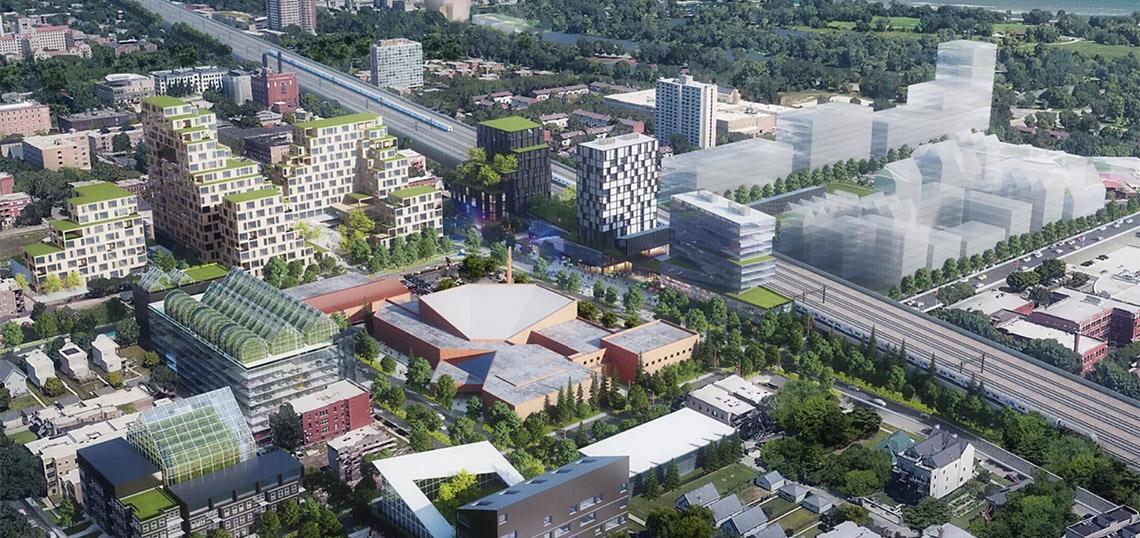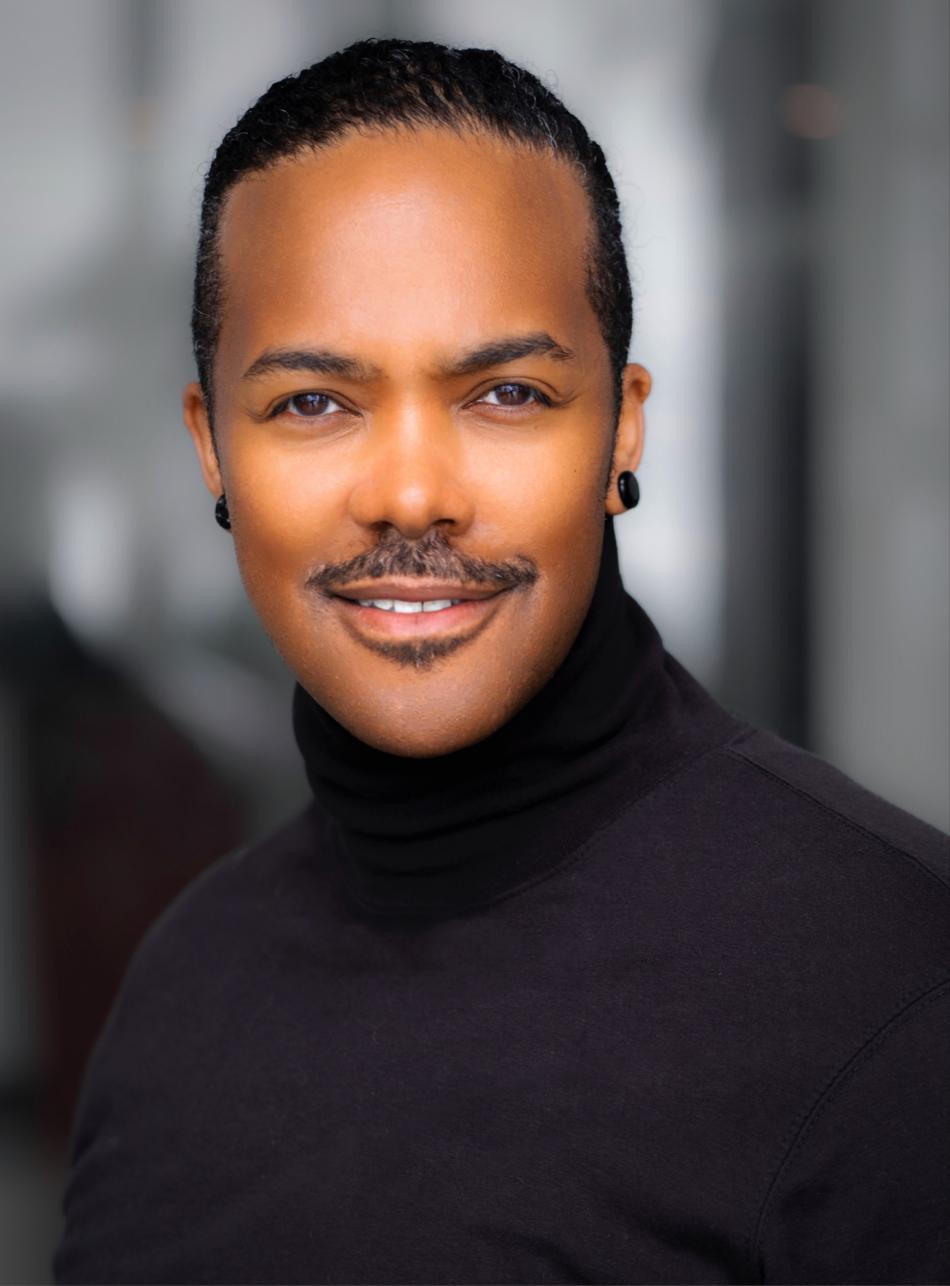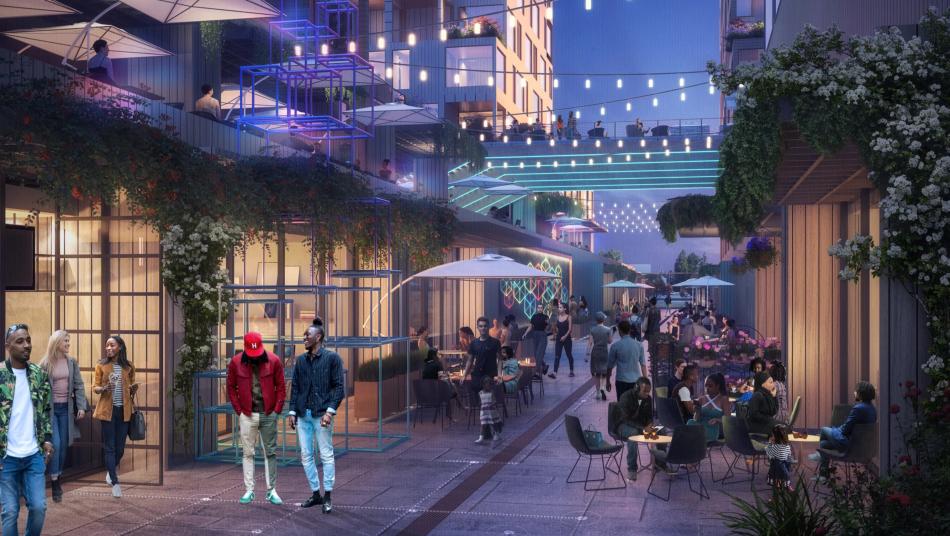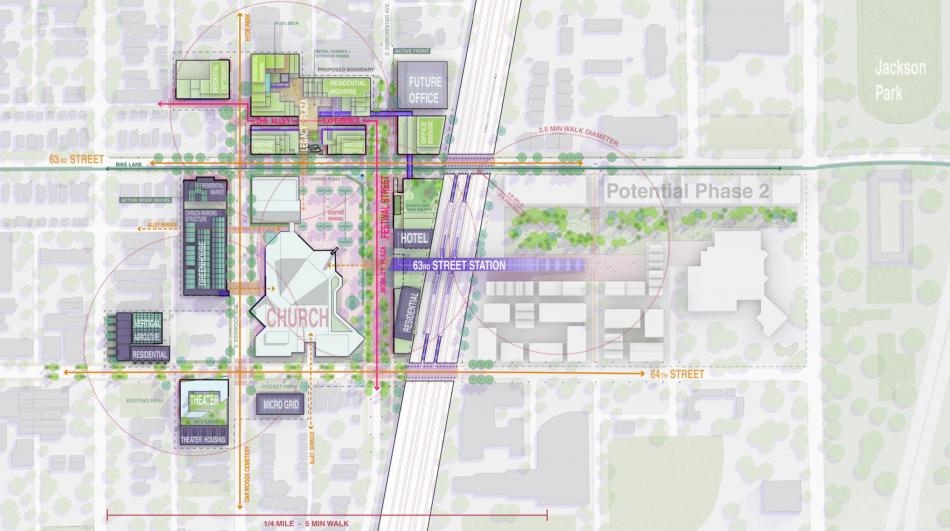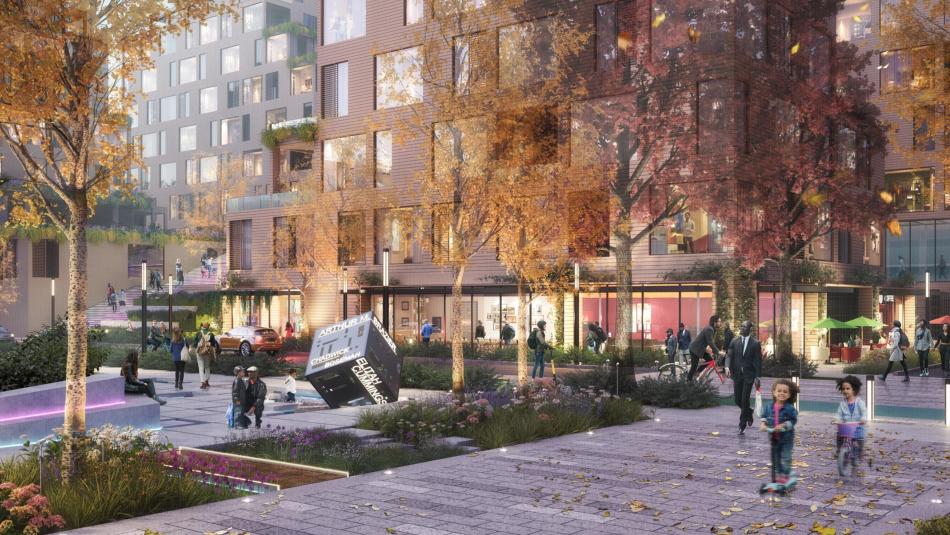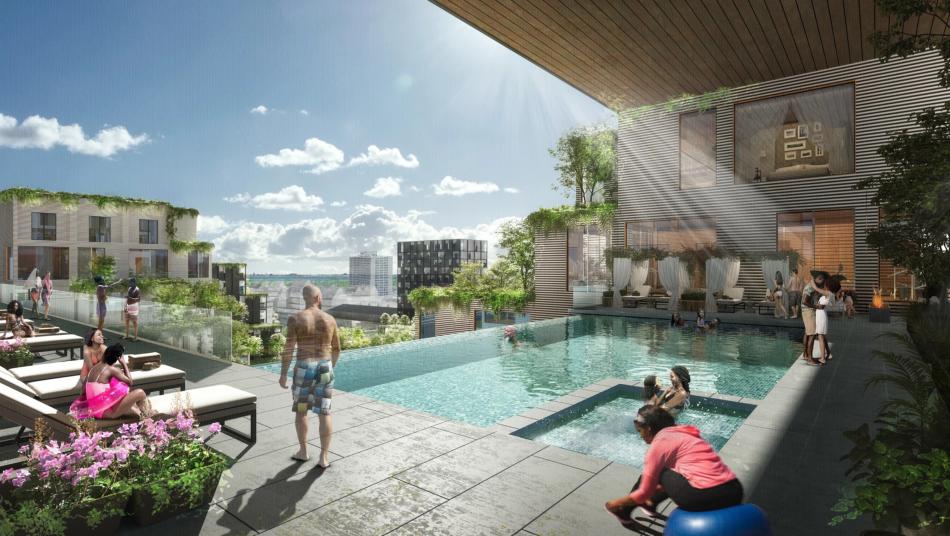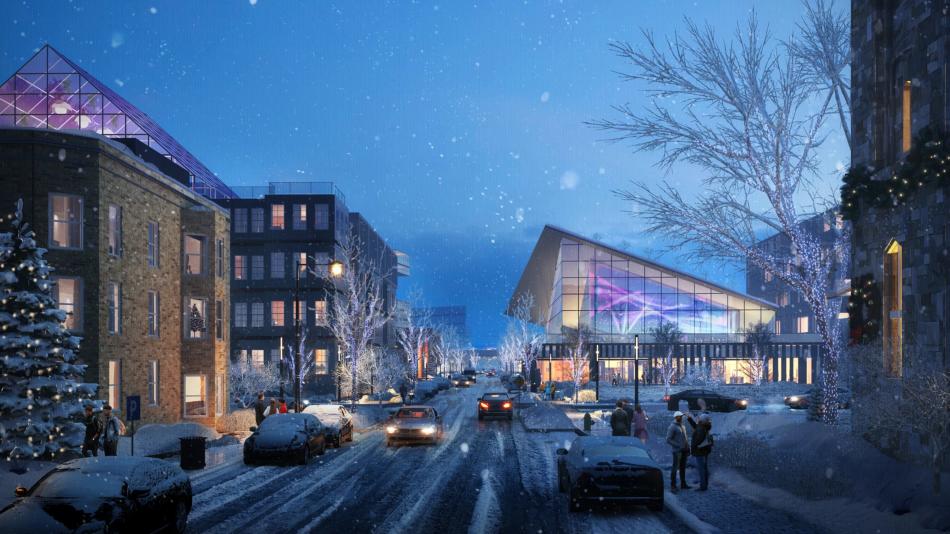Planned by J. Byron Brazier and his father, Apostolic Church pastor Byron Brazier, Woodlawn Central is a multiphase megadevelopment centered around the church at 63rd and Dorchester. After initially announcing the concept in December 2021, J. Byron has been working with partners Skidmore, Owings, and Merrill, Gensler, AECOM, Citibank, the University of Chicago, and Preservation of Affordable Housing to move the proposal forward. Urbanize recently sat down with J. Byron to see where the project stands and how it stands out as a model for the new Black community.
As a catalytic development for the South Side, J. Byron sees Woodlawn Central as the chance to show the city that the Black community has the ability to develop itself and to develop it from the inside out, and to do it without displacement. “I think we've been saddled with the idea that we don't know what we're doing. And a lot of that has to do with the lack of modern representation,” said J. Byron.
“As you know, there's about 25,000 residents within the community who are predominantly Black. And the objective is to develop and put them as a priority so that they can stay. But historically, Woodlawn is known for having a 90,000-person population, so we have a lot of room to grow,” said J. Byron.
While it has been over two years, the proposal has remained largely consistent. “We're still doing the two high rises, two mid-rises and promenade with the staircase that is inspired by the Spanish steps,” said J. Byron. The boutique hotel, call center, data center, residential buildings, theater, urban farming, parking, and microgrid are all still included in the plan.
With approximately 800 residential units planned, the development will offer a mix of workforce housing, artists’ housing, senior housing, affordable housing, and market-rate living. While they will not be using any LIHTC funding, the development team will meet the 30% affordability requirement applied in Woodlawn. J. Byron walked through the intent to offer both for-sale housing and rentals both to cater to capital partners, and to offer the amenities necessary to have Black Chicagoans who have moved away from Woodlawn to come back and re-enter the community.
Through our conversation, it became clear that Woodlawn Central will be driven by cutting edge technology. “One of the things that traditionally developers don't do is a digital master plan. That is a part of our entire approach.” “I love the conversation about AI, AR, and VR being integrated into economic development, health, safety, education, tourism, and entertainment.” While J. Byron plans to integrate AI and other technology into the development he believes “technology is a tool and it should be used as a tool and not a solution. It should be humanity over technology, as opposed to technology over humanity.”
With sustainability in mind, the development will have its own microgrid for electricity and energy generation. “There's a company that I'm really attracted to called Bloom Energy, and they have these components where they're taking the CO2 out of the air, and they're utilizing the gas. So, we're connecting to the gas and the electric utilities, but it's actually using the CO2 to store and to regenerate that energy back into the community,” J. Byron outlined. The technology also has the opportunity to be applied to individual buildings when larger master plans are not feasible.
As the project moves forward, the timeline is still in flux. “We would love to do it by 2025, but I'm not going to put that into stone, because things change. But in the process, we want to do an installation around the perimeters of some of the parking lots, which remind our community where we've been,” said J. Byron. The development will need to go through a rezoning process to amend the church’s current Planned Development to allow for the large mixed-use development, with construction expected to proceed parcel by parcel individually once approved and financed.





